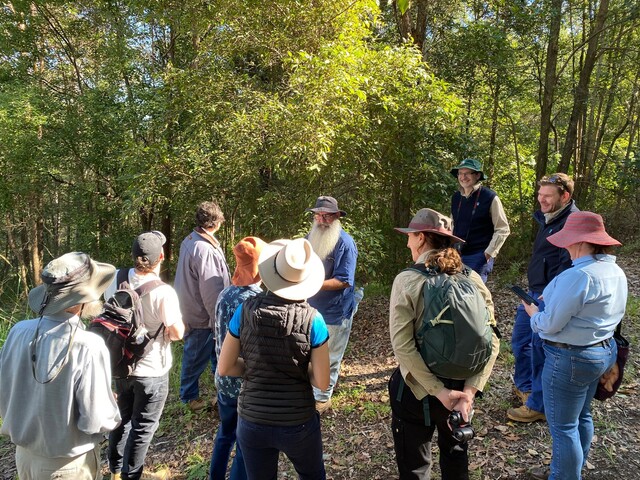
Sunshine Coast Council has released The third annual Sunshine Coast Biodiversity Report released last week by Sunshine Coast Council showed it was exceeding its target to retain the region’s net native vegetation cover from 2016 to 2041 but was losing remnant vegetation.
The report which examines the status of the region’s biodiversity provides information that informs regional planning and decision making.
The report shows since 2016, the amount of native vegetation in the region has increased by 5,655 hectares, and now covers 57 per cent of the Sunshine Coast local government area.
Environment Portfolio Councillor Maria Suarez said Council was committed to retaining the 2016 extent of native vegetation to 2041, a target set in the Environment and Liveability Strategy 2023.
“We’ve seen vegetation growth across both public and private land, with active restoration also helping that along,” she said.
“That’s through Council operations and the incredible efforts of our volunteer community groups and private landowners restoring habitat on their properties.”
Cr Suarez acknowledged while the overall native vegetation area had increased, the extent of remnant vegetation within that total had reduced by 1142 hectares since 2016.
Remnant vegetation areas as mapped by the state are mature, high-functioning ecosystems that reach specific ecological standards.
“As our region grows, land clearing associated with urban development, infrastructure projects and agriculture are some of the factors leading to this remnant vegetation loss,” Cr Suarez said.
“Balancing the needs of our communities while maintaining and improving our biodiversity is a challenging task, but is a must as we deliver a sustainable Sunshine Coast.”
Almost half (47 per cent) of that native vegetation area is in the Sunshine Coast Council Area’s 67,140-hectare conservation estate, which includes State National Parks and Conservation Parks, Council Environment Reserves, Nature Refuges, Statutory environmental covenants and Land for Wildlife properties.
Council maintains 8,119 hectares of conservation area through its Environment Reserve Network.
The Environment Levy has contributed significantly to this network by acquiring almost half of these lands.
Meanwhile, owners of more than 1000 Land for Wildlife properties are also managing 14,917 hectares for conservation.
Land for Wildlife is a free voluntary program that helps landholders manage wildlife habitat on their properties.
Fellow Environment Portfolio Councillor Tim Burns said Land for Wildlife properties had contributed the greatest increase in land for conservation since 2016.
“More and more landholders are seeing the benefits of the program, which offers free help to enhance biodiversity on your property in a way that works for you,” he said.
“From the coastal wallum heath and mangroves to our hinterland rainforests, every species plays a unique role in our ecosystems.
“We rely on these ecosystems throughout our day-to-day lives.
“They pollinate our food crops, enhance community wellbeing, support tourism industries and provide countless other services.
“Our Sunshine Coast Biosphere status recognises we are all connected: everyone has a stake in this, and we all can make a contribution.”
Residents can get involved by joining a local bush care group, considering a voluntary Land for Wildlife agreement for your property and
learning more about local initiatives and environmental projects.
The Biodiversity Report is available on Council’s website.








